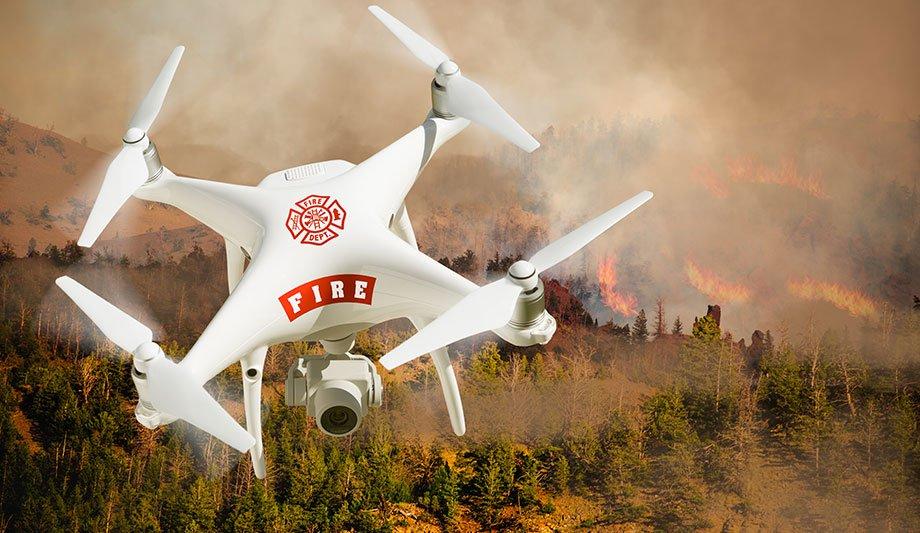Innovation in the fire protection industry can oftentimes be slow to move forward, particularly when compared to other similar industries. This is because legislation, regulation, and enforcement, while all necessary proponents within the sector, can often slow the tide of revolutionary ideas. However, the ability to innovate in this industry can quite literally be a matter of life and death.
The developing intricacies of modern infrastructure and the demand for more sustainable solutions must also fuel the need for innovation. Fortunately, there are many companies at the forefront of technical and digital transformation within the industry. At the NFPA Conference in June 2019, much of the chatter revolved around Smart Connected Things (SCoT) within fire protection systems.
Smart Technology
Smart Tech can offer more accurate, efficient inspections and testing, which on its own is capable of saving lives
These systems are now being used by both building owners and service providers to determine fire protection system conditions as well as helping to perform some critical testing functions remotely - which of course has been invaluable in 2020. Smart Tech can offer more accurate, efficient inspections and testing, which on its own is capable of saving lives and protecting valuable property.
For example, if a warehouse has been equipped with smart tech solutions to observe water pressure and flow rates within a building sprinkler system, users can have a real-time view of how much water has been flowing per minute. This means that should a fire break out in a particular part of the building the flow rate within the sprinkler can be routed to that specific area to put the blaze out as efficiently and as quickly as possible.
Advanced Smoke Detection
Fire protection brands have made huge leaps forward in their quest to develop smoke detectors which meet with the UL 268 Safety Standards for 2020. The new standard requires that all smoke alarms and detectors must meet two critical benchmarks:
- Increased responsiveness to the new polyurethane foam tests.
- Ability to distinguish the difference between smoke aerosols from accidental fire sources and smoke aerosols from cooking sources.
Basically, domestic smoke detectors must be able to understand the difference between materials, based on the kinds of smoke they emit when they catch fire. Detectors must also distinguish between the smoke produced as a by-product of cooking, or a “nuisance” fire, and a real fire, which could pose a threat to human life.
Smoke & Flame Video Detection
The new alarms feature “TruSense Technology”, which is designed to be able to differentiate between fast and smoldering flames and common false alarms. These technologies were developed in the hope that homeowners wouldn’t just simply remove smoke alarms or batteries due to frequent false alarms. Video Image Smoke Detection technology has been around the industry for a few years now, but full video detection is now being used to supplement it, in order to further the applications of this technology.
A video image will then be processed by the software that then concludes whether the clip contains smoke or flames
This tech uses video-based analytical algorithms that integrate cameras into advanced flame and smoke detection solutions. A video image will then be processed by the software that then concludes whether the clip contains smoke or flames. The algorithms used to distinguish smoke and flames can utilize several different metrics, such as a change in brightness, contrast and movement.
Water Mist Suppression Systems
Depending on the kind of system in place, these recognition tools can even offer security and other surveillance features too. This technology is ideal in locations with large surface areas, such as power plants, stadiums, shopping centers and warehouses and distribution centers, where a fire may be particularly challenging to locate using traditional methods. Flame Video systems trace fire to its origin to make for quicker, more effective extinguishment and evacuation.
A major concern for most businesses in any industry is sustainability. Water mist suppression systems are able to fight fires using significantly less water than a traditional system. The water is stored under extreme pressure and is released using specialized sprinklers and spray heads. This enables the water is able to reach a far larger surface area since the droplets are much smaller.
Exit Point Technology
A water mist suppression system is also designed to cool down an area where fire and smoke are present, by blocking radiant heat and eliminating oxygen from the origin point. These systems are often used in areas that see a lot of foot traffic or buildings where the possibility of water damage would be detrimental. All Fire Alarm Systems must include notification appliances, such as bells, horns and strobe lights.
Technological advances use directional sound to help evacuees determine the pathway to the fire exits
But the latest devices now provide verbal instruction on what to do in the event of a blaze and tell people where to go to the nearest exit. It’s highly likely that evacuation may be hampered by black smoke and smog in a real-life emergency. This obviously makes visibility limited, thereby possibly making exit signs challenging to see. The latest technological advances use directional sound to help evacuees to determine the location and the pathway to the fire exits.
New Sealing Sprinkler Guidance
The audible sound is specially adapted to the human ear, meaning that someone could easily determine the direction and sound. While the previous entries in this list have been about products, it’s also absolutely vital that fire safety regulations are also developed alongside these products. Not only does this ensure the protection of occupants within the building, but also the structure of the building itself.
For example, The Ministry of Housing, Government & Local Government announced tweaks to the Approved Document B (Fire Safety) which went into effect last November and applied to building works that started this January. These updates apply to blocks of flats and mixed-use buildings with top floors that are more than eleven meters above ground level. The legislation change means that C-PVC sprinkler pipes now need to be sealed with only specialist and approved products. The height threshold for a sprinkler system in residential flat blocks has been reduced from 30 to 11 meters.


















